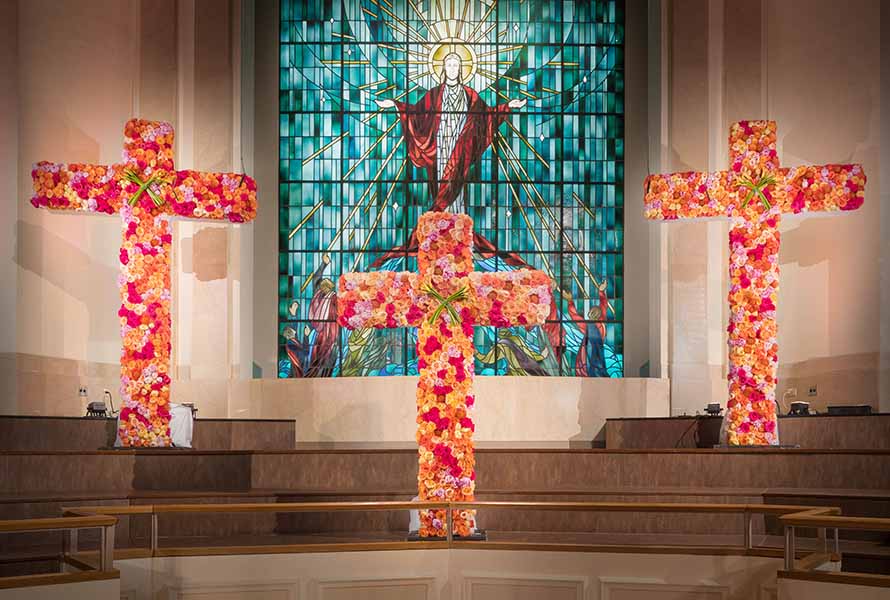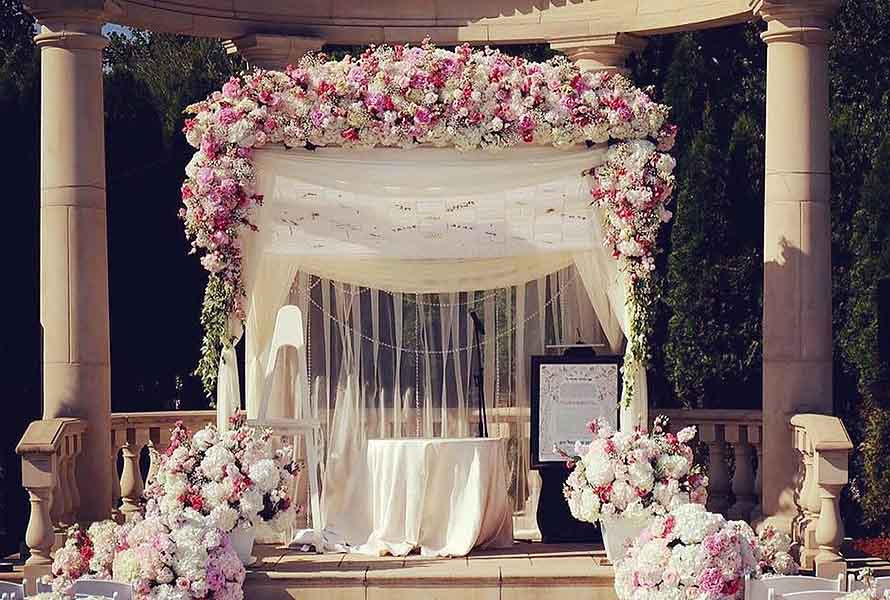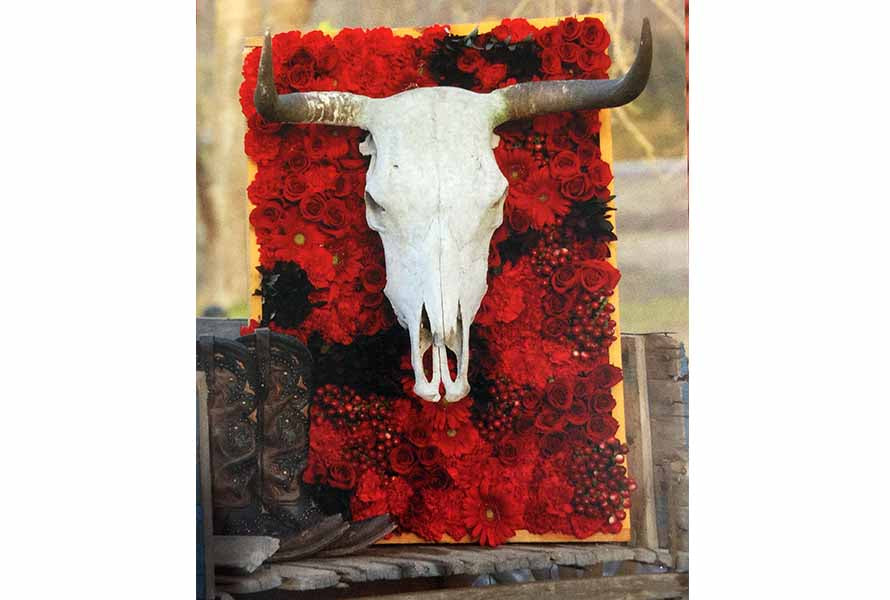
Wedding Flower Crosses, From Simple to Spectacular
Are your brides asking for flower decorated wedding crosses? From simple designs to spectacular décor, this emerging floral trend can be adapted to fit any bride’s dream.
The challenge for a florist is knowing which design technique to use for each application. Floral mechanic needs depend on the type of cross, ceremony setting, water source required due to weather and logistics of setup and take-down.
 We spoke with two floral designers, one who is getting more requests for crosses, and another who traveled from Philadelphia to San Antonio for a unique install of three Texas-sized crosses with a team of 12. We compared basic ‘design and deliver’ arrangements to challenging built-in-place structural designs.
Here’s what we discovered.
We spoke with two floral designers, one who is getting more requests for crosses, and another who traveled from Philadelphia to San Antonio for a unique install of three Texas-sized crosses with a team of 12. We compared basic ‘design and deliver’ arrangements to challenging built-in-place structural designs.
Here’s what we discovered.
 We spoke with two floral designers, one who is getting more requests for crosses, and another who traveled from Philadelphia to San Antonio for a unique install of three Texas-sized crosses with a team of 12. We compared basic ‘design and deliver’ arrangements to challenging built-in-place structural designs.
Here’s what we discovered.
We spoke with two floral designers, one who is getting more requests for crosses, and another who traveled from Philadelphia to San Antonio for a unique install of three Texas-sized crosses with a team of 12. We compared basic ‘design and deliver’ arrangements to challenging built-in-place structural designs.
Here’s what we discovered.
Wedding crosses, an emerging trend
The timeless tradition of church weddings continues, but barns, gardens and museums are becoming increasingly popular for nontraditional weddings. Some brides are blending faith and flowers by incorporating a floral wedding cross in ceremony décor to acknowledge religious beliefs regardless of the venue. The designs can vary in style, size and expense according to the bride’s preference. “Our brides are starting to ask for wedding crosses,” said Todd Bussey AIFD of Bussey’s Florist & Gifts, which has two shops in neighboring Georgia cities, Cedartown and Rome. “They’re most often used to create a focal point for the exchange of vows, especially in an outdoor setting.” He offers advice on which products to use for these simple designs. [rev_slider alias="wedding-flower-crosses-1"]Photo: Bussey’s Florist & Gifts, Inc.
Simple ‘design and deliver’ techniques
“Thus far, our designs have been relatively simple, but I anticipate that the trend will grow as it is becoming more prevalent on Pinterest,” Todd says. “We’ve used the OASIS® Garland to add flowers directly to cross structures. This works well because the garland of flowers can be designed in the shop and easily installed on-site in a matter of minutes.” “We’ve also banked flower arrangements on either side of a Celtic cross for an altar table.” A 36-inch OASIS® Mache Cross makes a good base mechanic for creating a one-sided floral cross for an altar table as well. Other fast and easy options include using cable ties to attach flower-filled OASIS® Spray Bars or RAQUETTES® Holders to a structure or a FLORACAGE® Grande Holder or TRIBUTE CAGE® Holder at the center of the cross.Elaborate crosses constructed from foam tiles
[rev_slider alias="wedding-flower-crosses-2"]Photo: Photography by Jerry Hayes
Bill Schaffer AIFD, AAF, PFCI and Kristine Kratt AIFD, PFCI of Schaffer Designs in Philadelphia, had a different experience with their first wedding crosses for a ceremony in San Antonio, Texas. “This was not a usual request nor one we see in our everyday inquiries,” Bill says. “We have never done crosses for a ceremony before. This particular family has strong religious beliefs and were very passionate about showing their respect for their faith during the wedding ceremony.” Bill, Kris and the Schaffer Designs freelance floral design team traveled to Texas to execute a large wedding event that included the three elaborate crosses with 3,000 roses. The crosses were built upon custom props designed by his firm and San Antonio event planners Wilkinson Rhodes. “To construct the crosses, we used trusses as a base with 100-pound base plates. To be certain the pieces would not tip over, additional sand bags were placed inside the base of the trusses. The back and sides of the crosses had white fabric stretched over the wooden frame that was built around the truss,” explains Bill. “The horizontal line of each cross was designed with ½ inch plywood and an internal metal armature mounted to the truss. This was the most critical design element. This line had to be sturdy to handle the water weight and the flowers, while not being overly weighted to the point of not being able to lift them in “place or be able to break down quickly after the ceremony,” Bill continues. The front of each cross was lined with OASIS® Floral Foam Tiles. The tiles were attached to the structure with industrial strength Velcro and given added support with wood screws placed in between many of the cross-sections of the tiles.”


Leave a comment
This site is protected by hCaptcha and the hCaptcha Privacy Policy and Terms of Service apply.